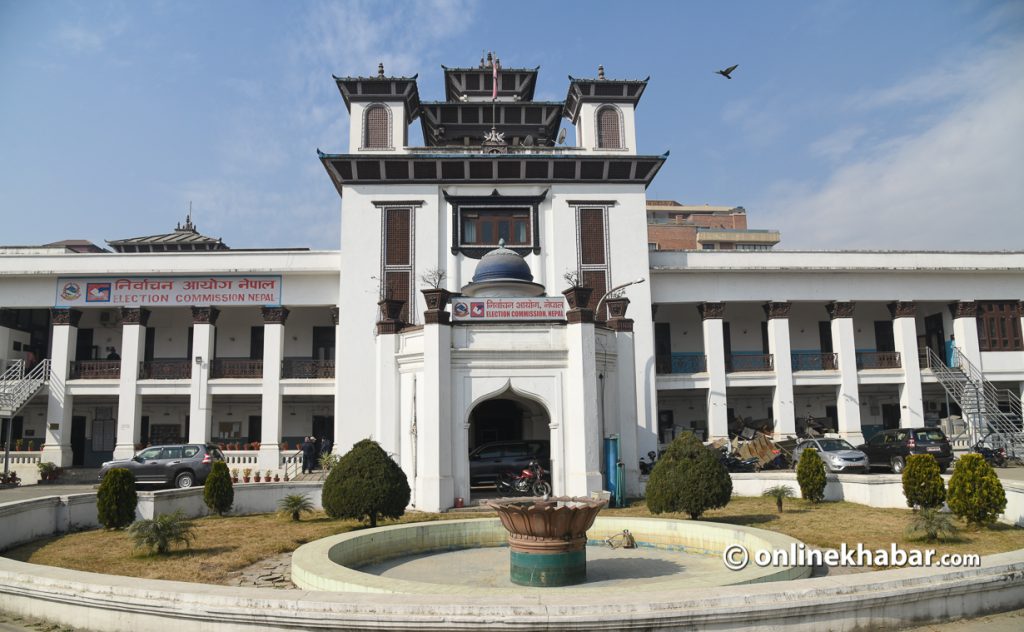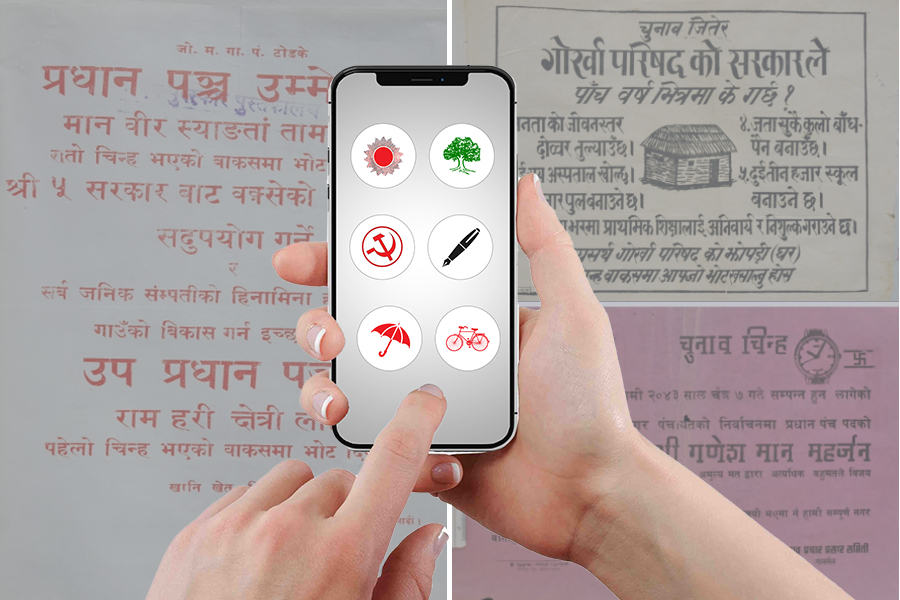As social media have become a part of everyone’s daily life, the Election Commission (EC) is tapping into its strength for its election campaigns to spread awareness about the forthcoming local elections scheduled for May 13.
On Sunday, the commission called for social media users and announced that people sharing the content prepared by the commission will get a chance to win cash prizes. It stated that the commission will give people a cash prize of Rs 20,000, Rs 30,000 and Rs 50,000 to a person who gets two million, three million and five million views on the video they share respectively. This goes to show the efforts the commission is putting to ensure that its message reaches a wider audience.
Election campaigns then

However, this is not the first time that the commission has reached out to the general public to convey its message of the election. In the first general election held in 1958, the commission took help from selected lyricists, singers, poets and writers to spread information about the elections.
The then Election Campaign Department gave the task of composing songs to poets Dharma Raj Thapa and Ram Chandra Prasad to convey the message about the elections. Likewise, 5,000 copies of the book, Nirwachanko Sawai (Verses of the Elections), by Laxman Lohani were published and distributed free of charge, which has been mentioned in the book Rastriya Nirwachan Prachar Samagri (National Election Campaign Materials), edited by Deepak Aryal and Kapil Timilsina for Madan Puraskar Pustakalaya.
Apart from that, mock elections were conducted in various districts, pamphlets were distributed, and then singers were sent to the villages to promote the elections through folk songs. The then Chief Election Commissioner Subarna SJB Rana emphasised these activities to inform the voters about the elections.
Compared to the earlier years, the major difference is in the promotion of elections this time is the use of technology while disseminating information. Using what is available, the commission has given its utmost priority to social media through which it has been conveying its decisions, appeals and instructions to both the general public and the candidates. The commission has also chosen caller back tones for voter education.
Changing times

Since the mass media was in its nascent phase and social media did not exist, election campaigns were done physically till the 1990s. Although municipal elections were held in 1947 and 1953, the 1958 general elections were the first to get recognised widely in the country. The election campaign that time took place almost a year before the general elections.
Folk poet Ram Chandra Prasad even wrote a song for the elections on March 31, 1957. This shows how the election campaign material was prepared seven months before the actual elections. Moreover, the government also published a fortnightly magazine called Nirwachan Sandesh which gave a clear idea of the time taken for the campaign.
At that time, the parties had many challenges while promoting themselves. The party leaders and cadres themselves visited houses of people to seek votes in their favour through folk songs, poems and dramas.
Also, the timing of the voting and the announcement of the results of the 1958 elections suggests difficulty for the commission and the political parties to campaign at that time. The election time had to change many times and after the elections, it took two and a half months for the results.
During the Panchayat period, the election campaigning style of leaders remained the same as they would go door to door asking for votes. Like in the late 50s, politicians took the help of songs, music and drama. Apart from that, they also held rallies, distributed pamphlets and took the help of graffiti during their campaigns. Leaders say that the style of using the picture of the candidates in the pamphlets prevailed after the referendum of 1979.
Leaders still remember the election campaigning style adopted by Padma Ratna Tuladhar when he contested the elections in 1986. Tuladhar’s speech given at Basantapur Dabali was even taped and played in other parts of Kathmandu.
“He won the election with the help of the same speech delivered in the streets of Kathmandu in a recorded form,” says Komal Bhattarai, a leader of the student movement of 1979.
Following the 1991 elections, political parties adopted the style of posting pamphlets, painting graffiti and holding public meetings to reach as many voters as they could. Likewise, in the local elections of 1992 and 1997, and in the parliamentary elections of 1994 and 1995, physical presence was the main means of party promotion. However, after the 2006 People’s Movement, election campaigns of political parties have been gradually changing.
Even today, candidates continue to go door to door asking for votes. But, apart from that, their main focus has been using technology and social media to campaign.
“We also do programmes with physical participation, but we give priority to publicity through social media,” says Nepali Congress spokesperson Prakash Sharan Mahat.
What does the code of conduct say about the current election campaigns?

With the increasing expansion of the internet and electricity, the parties are using social networks to reach the masses for the elections. The importance given to social media and the warnings given in the code of conduct issued by the Election Commission for the upcoming local elections further highlights its importance.
Six of the 20 points that should not be done during the election period under the code of conduct for all are focused on the use of social media. Those points have restricted parties to create any content and share them that could violate the election process. Apart from this, the method of using social media has been specified in the code of conduct for those in public bodies under different headings.
In addition to this, the commission issued a separate statement on the use of social media on April 29.
“If any political party or candidate is found making a political advertisement on social media without the approval of the commission or the office of the concerned election officer, it will be treated as a violation of the code of conduct,” the statement says.
The reason for issuing such a statement 13 days after the issuance of the code of conduct is that almost all the candidates prefer to use social media and campaign in their favour, something that was not imagined six decades ago.
This story was translated from the original Nepali version and edited for clarity and length.



























